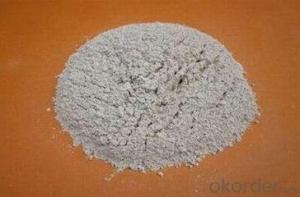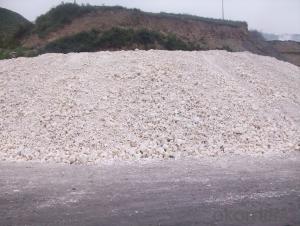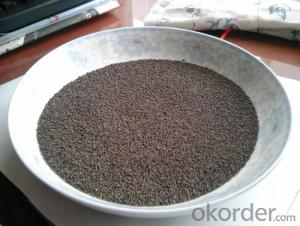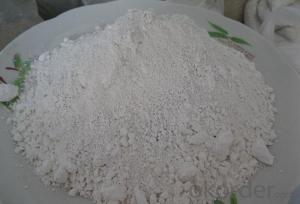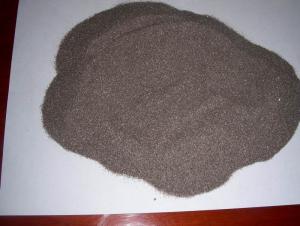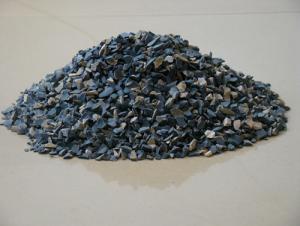73% Rotary/ Shaft/ Round Kiln Alumina Calcined Bauxite Raw Material for Refractory
- Loading Port:
- Tianjin
- Payment Terms:
- TT OR LC
- Min Order Qty:
- 25 m.t.
- Supply Capability:
- 3000 m.t./month
OKorder Service Pledge
OKorder Financial Service
You Might Also Like
73% Rotary/ Shaft/ Round Kiln Alumina Calcined Bauxite Raw Material for Refractory
Product Description:
Bauxite, alumina or bauxite miner , main ingredients are aluminum oxide, hydrate alumina containing impurities,
is an earthy mineral.White or grey, brown yellow or light red by iron.From 4 to 3.9 g/cm3 density, hardness, 1 ~ 3, opaque, very brittle.
Very difficult to melt.Insoluble in water, soluble in sulfuric acid, sodium hydroxide solution.Mainly used for aluminium, refractory material.
Size:
Size of particles: 0-1mm,1-3mm,3-5mm,5-8mm,8-15mm,0-5mm,0-50mm
Size of powder: -200mesh,-270mesh,-325mesh
Applications:
Bauxite clinker is mainly used for manufacturing high-quality refractory products, refractory castable, sagger, kiln furniture, crucibles, precision casting industrial,refractory ceramic,ceramic fiber products, etc
Calcined Bauxite Grade:
| 1.Refractory Grade: |
Refractory grade bauxite has high refractoriness, good mechanical strength and moderate slag resistance. Bauxite in the refractory industry is typically used in ladle working lining, tundish furniture, delta sections, general perpose repairment, aluminium melting furnace and mineral processing.
| 3. Rotary calcined bauxite: |
Rotary Kiln Bauxite, as the name suggests, it is the bauxite produced by rotary kiln. there are three kinds of kilns for bauxite production mainly, rotary kiln, shaft kiln and round kiln.
| 4. Shaft kiln calcined bauxite: |
Shaft kiln bauxite, the bauxite calcined by shaft kiln. the raw material-bauxite ore is loaded from the top of kiln together with coal powder and combustion improver,the fire of calcination comes from kiln bottom, about 1300-1400 ℃After the complete calcination, the bauxite is carried out from the bottom.
Packaging & Delivery
Packaging Details: In bulk or in 1-1.25mr bag
Product Pictures:
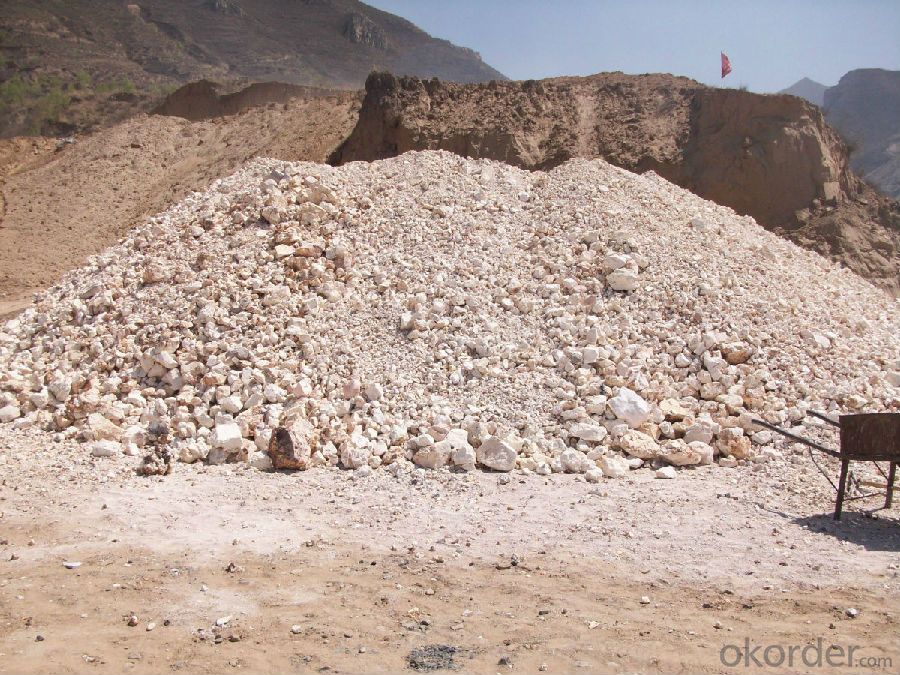

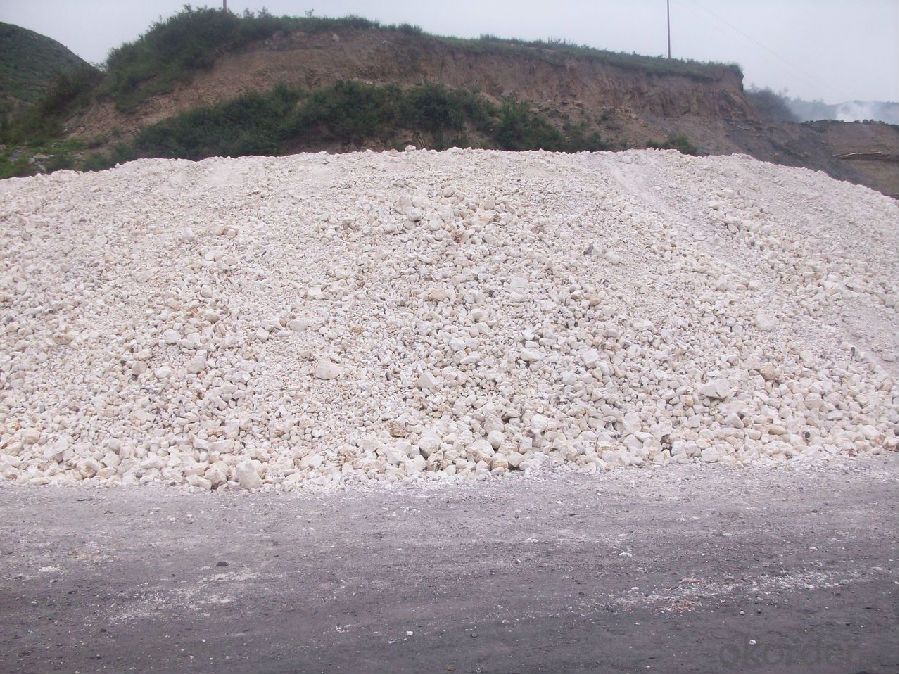
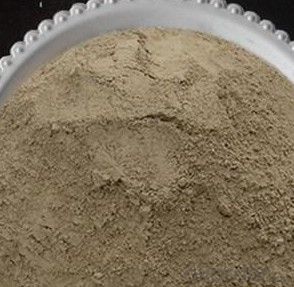
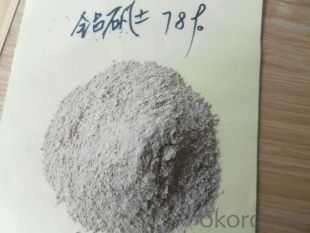
Our Service:
1. Your inquiry related to our products or prices will be replied in 24hours.
2. Manufacturer with large capacity, ensure the fast production cycle after confirmed the order.
3. Our professional technicians will answer your entire enquiry in patient.
4. To meet the refractory solutions, we can serve as your instructions.
5. Protection of sales area and private information for our entire customer.
If you’ve kind enquiries, please don’t hesitate to let us know. ^_^
- Q:What refractories are resistant to fluorine gas?
- It is recommended to use fused-quartz brick, which will produce hydrofluoric acid fluorine (an acidic gas) when water vapors. It is cheap. While it is recommended to use silica?brick if it exceeds 1,200 degrees. So acidic refractory is an advisable refractory for using. It works well if the temperature is below 1200 degrees.
- Q:What's the fire resistance rating of the exterior fire?retardant?coating?
- Current fireproofing material is mainly classified into five grades: A class: Incombustible building material which is almost incombustible. A1 class: It is noncombustible and cann't cause open fire. A2 class: It is noncombustible but needs to measure the smoke it will cause and that should be qualified. B1 class: Flame-retardant building materials: Good in fire retardation, it is non-combustible when meeting open fire in the air or under high temperature, and it is difficult for the fire to spread quickly. Besides, when the fire source is removed, combustion stops immediately. B2 class: Combustible building material: It has certain fire retardation. In the case of open fire in the air or at high temperature, it will immediately burst into flames, and easily lead to the spread of fire, such as the spread to wooden pillars, timber roof truss, timber beams, wood stairs, etc. B3 class: Flammable building material has no fire retardation effect at all. It is highly combustible with big fire risk. Besides, the classifications of fire resistance rating of building materials are different according to different standards: dDIN4102: A1, A2, B1, B2, B3; x0dEN13501-1: A1, A2, B, C, D, E, F. Hope it helps.
- Q:Can anyone tell me what is the material of which the mould for refractory is made?
- W18Cr4V die steel
- Q:What are the commonly used fire protection materials
- Firewall. The fire wall is made of non combustible material, and is directly installed on the base of the building or the reinforced concrete frame or fire proof walls . Fireproof limit of the firewall, according to the current "building regulations", is 4 hours, wheras the specification of Technical specification for concrete structures of tall building is 3 hours. doors resistant to fire, heat in a certain period of time These door usually prevent the spread of fire and gas in the fire resistant wall, staircase, pipe well. Fire door can be divided into steel fire doors, wood fire doors and composite materials fire door according to the material used. According to the limit of fire resistance can be divided into the class A fire door (1.2h), B fire doors (0.9), class C fire door (0.6h); (3) fire window. Windows resistant to fire, heat in a certain period of time It is usually installed in the fire resistance wall or doors; the fire shutter. This roller shutter can be refractory in a certain period of time. It is typically used for heat and fire insulation in escalator with difficulties to install fire resistant wall, fire resistant valve and smoke resistant valve. Fire resistant valve is installed in the ventilation and air conditioning system of air supply and return air duct, usually in the open state, fire, It will be turn off when the pipeline gas temperature reached 70 degrees, can meet the requirement for fire resistance and insulation for gas and fire. Smoke fire resistant damper installed in the exhaust system pipe, when the pipeline gas temperature reached 280 degrees, it will close automatically, insulating fire and gas.
- Q:What are the applications of refractory in petroleum?
- Petroleum industrial furnace has many varieties. Generally, it includes tubular with complex structure, whose use temperature is generally 500 to 600 degrees centigrade, sometimes may be 800 degrees centigrade. Petroleum gas contains hydrogen sulfide and solid particulate matter; first correct the answer of the first floor: It is not used in petroleum industry. As shown in the left picture, it is tubular heating furnace, appilied to metallurgical industry. Lined with lightweight insulation and wear-resistant layers, and resistant to wear and corrosion: 1; & nbsp, but the using temperature is not high; it is a thermal equipment in the oil refining process. High alumina refractory castable used for refractory layer. It is an important equipment of petroleum boiling catalysis and dissociation. You can choose light refractory bricks or refractory?castables; as shown in the right picture, it is catalytic cracking unit, and can bear pressure. Note; & nbsp: // f; & nbsp.hiphotos, fire-resistant plastic or refractory ramming mass has chemical corrosion and wear effect on lining; & nbsp, less than 1,350 degrees centigrade. The yse temperatures is up to 1,100 degrees centigrade.
- Q:Do you know where I can buy refractories?
- You can buy refractories in these places: 1. Addresses of refractory factory: No. 57, Qingshan District, Wuhan 2. Address of Qingshan refractory factory in Wuhan: Special NO.1 Xingli Road Hongshan District, Wuhan 3. Address of Xinghuo refractory factory in Hongshan district: No. 34 Qingshan District, Wuhan 4. Address of Henao refractory factory: No. 78 Jiangxia District, Wuhan
- Q:What are the specifications of refractory kilns ?
- Since the coefficient of thermal expansion of the basic brick is large, expansion rate is about 1-1.2% under 1000 ℃ The literature indicates that: "Under the condition that the temperature was raised to 1000 ℃ and stress in brick lining is relaxed, 300N / mm2 of compressive stress can be produced, which is equals to ten times structural strength of ordinary magnesia chrome brick, six times structural strength of magnesia chrome brick, dolomite brick and spinel brick, so any basic bricks can not afford, " the paper also pointed out that " heat expansion rate of kiln body can partially compensate for expansion rate of the inner lining of 0.2% -0.4%, which is 1/3 of thermal expansion rate of ordinary magnesia-chrome brick under 1000 ℃. However, it occurs under thermal equilibrium conditions. Thereby, the kiln should be dried slowly, allowing the temperature of the kiln body to go up slowly, thus the role of compensation can be played. " This is the key to using the basic brick. " Procedures of refractory for cement kiln "( tentative one) has clearly regulated baking and cooling of the kiln in the first section of the fifth chapters. In the heating process, in particular when the temperature is in the range of 300-1000 ℃, heating rate must be less than 60 ℃ / h. This is very clear in theory but it is difficult to implement.
- Q:Which basic refractory is better?
- Zhengzhou Xindeyuan Refractories Co., Ltd.and Zhengzhou Rongsheng Kiln Refractories cO.,Ltd. Their basic refractories mainly refer to refractories with magnesium oxide and calcium oxide as main components what can resist errosion of basic slag, including magnesia bricks, magnesia-alumina bricks, magnesia-chrome bricks, dolomite?bricka and so on(magnesia bricks), among which magnesia bricks is the most common. Magnesia brick containing more than 80% to 85% magnesium oxide, has good resistance to basic slag and iron slag, and higher refractoriness than clay and silica brick. It is mainly used for open-hearth?furnace, oxygen-blown converter, electric furnace, ferrous metal smelting equipment and other high temperature equipments.
- Q:Who can introduce the external wall thermal insulation materials fire rating regulations?
- 1. The thermal insulation material of level A combustion performance: Rock wool, glass wool, foam glass, foamed ceramics, foam cement, hole-closed perlite, etc. 2. combustion performance is level B1 insulation materials: Extruded polystyrene board (XPS) after special treatment / Special treatment of polyurethane (PU), phenolic aldehyde and gelatine powder polyphenyl granule 3 combustion performance is level B2 insulation material: Molding polystyrene board (EPS), extruded polystyrene board (XPS), polyurethane (PU), polyethylene (PE), etc. See the 2009 edition construction technical measures 4.3.6 Level A insulation material is only for fireproofing, but its thermal insulation performance is not better than organic XPS \\ EPS and other materials. I feel the best insulation materials should be modified phenolic board, which can keep insulation and fireproofing, but the unit price is very expensive. Insulation materials in the domestic market have some disadvantages, it is better to considere the materials within the acceptable range in the building needs.
- Q:who knows the fire resistant levels of fireproofing glass?
- According to the fire resistance levels, it can be divided into three categories: Class A: a kind of fireproofing glass that can satisfy the requirements of refractory integrity, refractory and thermal insulation at the same time. Including composite flameproof?glass and perfusion type fireproofing glass . This kind of glass has the properiyies of transmittance, fireproofing ( smoke insulation, fireproofing, and keeping out thermal radiation), sound insulation, shock resistance, and it's suitable for steel and wooden fire door of building decoration, windows, varnishing, partition walldaylighting?roof,ceiling?screen,perspective floor and other construction components demading for transparency and fireproofing. Class B: Marine fireproofing glass, including porthole fireproofing glass and rectangular window fireproofing glass, surface glass pane is tempered safety glass, the inner surface glass pane material can be arbitrary selection. Class C: it's a kind of monolithic fireproofing glass that only satisfies the requirements of refractory integrity. This kind of glass has characteristics of transmittance, fireproofing, smoke insulation and high strength,etc. It's suitable for fireproofing glass partition wall, fire Windows, outside curtain wall and other places without insulation requirements.
1. Manufacturer Overview |
|
|---|---|
| Location | |
| Year Established | |
| Annual Output Value | |
| Main Markets | |
| Company Certifications | |
2. Manufacturer Certificates |
|
|---|---|
| a) Certification Name | |
| Range | |
| Reference | |
| Validity Period | |
3. Manufacturer Capability |
|
|---|---|
| a)Trade Capacity | |
| Nearest Port | |
| Export Percentage | |
| No.of Employees in Trade Department | |
| Language Spoken: | |
| b)Factory Information | |
| Factory Size: | |
| No. of Production Lines | |
| Contract Manufacturing | |
| Product Price Range | |
Send your message to us
73% Rotary/ Shaft/ Round Kiln Alumina Calcined Bauxite Raw Material for Refractory
- Loading Port:
- Tianjin
- Payment Terms:
- TT OR LC
- Min Order Qty:
- 25 m.t.
- Supply Capability:
- 3000 m.t./month
OKorder Service Pledge
OKorder Financial Service
Similar products
New products
Hot products
Related keywords
